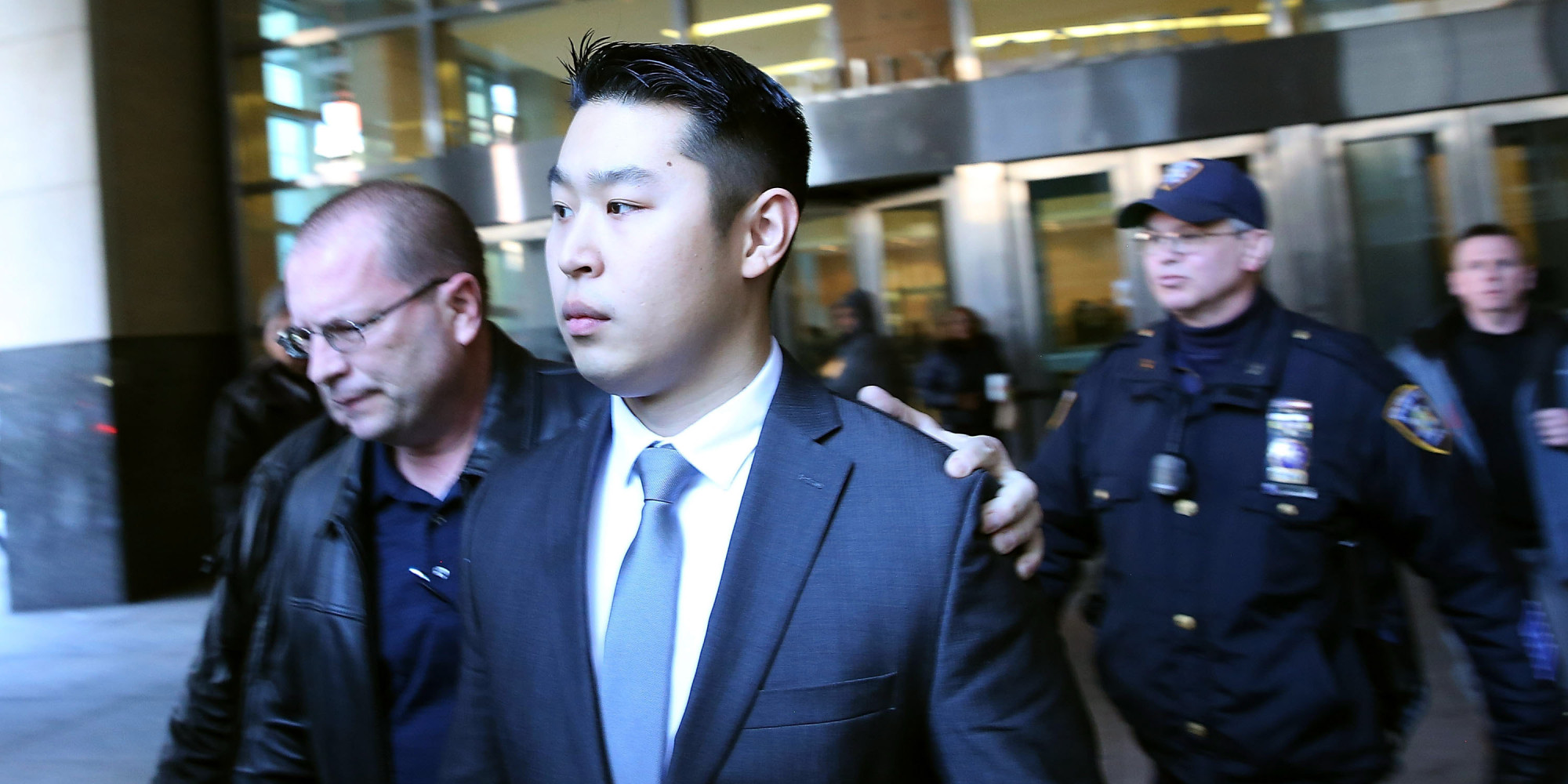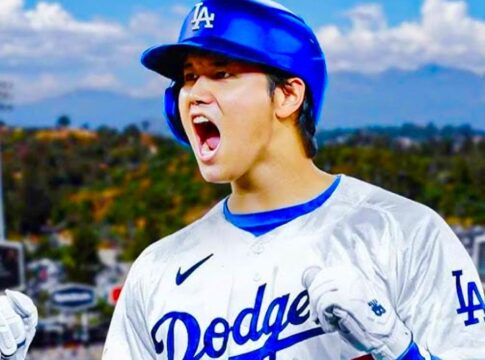By David Shih
As a Chinese American, I know that my racial identity occupies a space in the cultural imagination somewhere between white and black. I know that White supremacy often works in my favor to give me privilege and the benefit of the doubt. I know that the world is this way until it isn’t.
 Peter Liang, who is also Chinese American, must know this too. On February 10, a grand jury ruled to indict the NYPD officer for killing Akai Gurley, who is Black. Liang and his partner were in the stairwell of a public housing complex when Liang discharged his weapon and hit Gurley, who had entered from the floor below. The ruling followed three controversial grand jury decisions not to indict White officers Darren Wilson, Sean Williams, and Daniel Pantaleo for the deaths of Michael Brown, John Crawford, and Eric Garner, respectively. Because of this apparent racial double standard, the Coalition of Asian Americans for Civil Rights plans to protest Liang’s indictment later this month and has called for national rallies on that day in support of Liang. “Officer Liang is being used as a scapegoat,” says Doug Lee, co-chair of the CAACR. Other Asian American organizations support the indictment, leading to some confusion over what justice looks like in this case. But there should be no confusion: Peter Liang should stand trial. Liang’s supporters are asking for the same standard that exonerated Wilson, Williams, and Pantaleo. It is a racist standard.
Peter Liang, who is also Chinese American, must know this too. On February 10, a grand jury ruled to indict the NYPD officer for killing Akai Gurley, who is Black. Liang and his partner were in the stairwell of a public housing complex when Liang discharged his weapon and hit Gurley, who had entered from the floor below. The ruling followed three controversial grand jury decisions not to indict White officers Darren Wilson, Sean Williams, and Daniel Pantaleo for the deaths of Michael Brown, John Crawford, and Eric Garner, respectively. Because of this apparent racial double standard, the Coalition of Asian Americans for Civil Rights plans to protest Liang’s indictment later this month and has called for national rallies on that day in support of Liang. “Officer Liang is being used as a scapegoat,” says Doug Lee, co-chair of the CAACR. Other Asian American organizations support the indictment, leading to some confusion over what justice looks like in this case. But there should be no confusion: Peter Liang should stand trial. Liang’s supporters are asking for the same standard that exonerated Wilson, Williams, and Pantaleo. It is a racist standard.
Among other things, the story of Peter Liang and Akai Gurley is the story of contrasting stereotypes. By the mid-1960s, Chinese Americans began to be systematically associated with so-called “positive stereotypes.” In 1965, President Johnson signed the Hart-Celler Act, better known as the Immigration Act of 1965, on Liberty Island in New York City. This act abolished the racist National Origins quota system that had favored European nations, replacing it with one that privileged immigrants with professional work skills as well as those reuniting with families. As immigration from China steadily rose, public interest predictably turned to Chinese America. In 1966, the conservative U.S. News & World Report published a profile of Chinese American communities on both coasts. “Success Story of One Minority Group in U.S.” lavishes praise upon Chinese Americans for their commitment to improvement and success despite prejudice and other hardships. The article is an early and important blueprint of the “model minority” stereotype of Chinese Americans and Asian Americans in general.
My students sometimes aren’t sure how to feel about “positive” stereotypes of Asian Americans. What’s wrong with being known as educated, hard-working, and law-abiding? The problem with positive stereotypes is the same problem with negative ones: the dominant group gets to decide what they are. It decides who gets to be a part of the favored racial group and why. What this means is that you’re the model minority until you’re not. The history of Chinese Americans is a crash course on the social construction of race in America. Stereotypes come and go. From the beginning of significant Chinese immigration during the California gold rush to the present, Chinese Americans have been racialized as undesirable or desirable depending on circumstances at home and abroad. The Exclusion era, the World War 2 era, and the Korean War era all racialized Chinese Americans differently according to the historical needs of White supremacy. It took the Civil Rights Movement to shift the social meanings of Chinese Americans once again. Like negative stereotypes, the model minority stereotype is also a tool of White supremacy.
The model minority stereotype has always been less about praising Asian people than it has been about shaming Black people. From its lede, the unsigned “Success Story of One Minority Group in U.S.” is interested in more than the state of Chinese America; it aims to compare Chinese Americans to Black Americans. The article lists off the admirable qualities of a monolithic Chinese American community: low crime rate (especially among juveniles), strong work ethic, traditional family structures, value on education, low public assistance usage, etc. However, comparisons with Black communities quickly become conspicuous:
- At a time when it is being proposed that hundreds of billions be spent to uplift Negroes and other minorities, the nation’s 300,000 Chinese Americans are moving ahead on their own–with no help from anyone else.
- What you find, back of this remarkable group of Americans, is a story of adversity and prejudice that would shock those now complaining about the hardships endured by today’s Negroes.
- “The Chinese people here will work at anything. I know of some who were scholars in China and are now working as waiters in restaurants. . . . [T]hey’re willing to do something–they don’t sit around moaning.”
- Even though Chinese American teen-agers in New York City . . . are a source of growing worry to their parents, statistics show that those youths still cause far less trouble for the police than others do.
- “[I]t must be recognized that the Chinese and other Orientals in California were faced with even more prejudice than faces the Negro today. We haven’t stuck Negroes in concentration camps, for instance, as we did the Japanese in World War II.”
LATEST STORIES
 Chinese Americans weren’t the only Asian American ethnic group to be racialized in opposition to Black Americans. In 1992, Los Angeles became a flashpoint for tensions between Black Americans and Korean Americans. Heightening the injustice of the acquittal of the officers who brutalized Rodney King was the trial of Soon Ja Du. Store video caught owner Du killing teenager Latasha Harlins, a Black customer, in cold blood. Du was sentenced to probation. In the days to come, the violence of the LA uprising hit Korean American communities hard, with over half of Korean-owned businesses suffering damage. The spectacle of armed Korean Americans encamped on the rooftops of their stores told the story of a race war compatible with White supremacy. For some, Korean Americans became the poster children for White supremacy, defending their hard-won property from “problem” minorities lacking their work ethic and respect for the law. Although half of those arrested during the uprising were Latino, the “Black-Korean” narrative framed the conflict and drew attention from the racist structures oppressing all three groups.
Chinese Americans weren’t the only Asian American ethnic group to be racialized in opposition to Black Americans. In 1992, Los Angeles became a flashpoint for tensions between Black Americans and Korean Americans. Heightening the injustice of the acquittal of the officers who brutalized Rodney King was the trial of Soon Ja Du. Store video caught owner Du killing teenager Latasha Harlins, a Black customer, in cold blood. Du was sentenced to probation. In the days to come, the violence of the LA uprising hit Korean American communities hard, with over half of Korean-owned businesses suffering damage. The spectacle of armed Korean Americans encamped on the rooftops of their stores told the story of a race war compatible with White supremacy. For some, Korean Americans became the poster children for White supremacy, defending their hard-won property from “problem” minorities lacking their work ethic and respect for the law. Although half of those arrested during the uprising were Latino, the “Black-Korean” narrative framed the conflict and drew attention from the racist structures oppressing all three groups.
White supremacy spins the tale of the model minority because it is a story of American meritocracy. As late as 2014, the rags-to-riches model minority stereotype was the core talking point Bill O’Reilly used to rebut the argument that White privilege is real. O’Reilly cites Asian American rates of education and income that exceed those of all other groups, including White Americans. But the conflation of “Asian American” and “model minority” identities masks the poverty of many ethnic groups within Asian America. Coverage of the LA uprising tended to cast Korean American immigrants as successful entrepreneurs despite unique institutional barriers that produced wide economic disparity within the community. In 2010, Hmong Americans had the lowest per capita income of any racial/ethnic group, including Latinos. As the story of meritocracy, the model minority stereotype can disempower Asian Americans themselves by linking low social status to cultural deficiency. Positive stereotypes are a two-way street.
Today, model minorities can be too good to be true. Highly-skilled immigrants from India and China make possible the Asian demographic O’Reilly describes, and industry demand for them is so great that tech firms must enter a lottery for their H-1B visas. Sen. Jeff Sessions (R-AL) questions whether the perception of a perpetual shortage of tech workers is, in fact, accurate. The “Silicon Valley STEM Hoax,” he claims, is a ploy of American tech firms to hire lower-paid foreign labor instead of home-grown American labor. This fear of cheap foreign labor, mostly Asian, is not new. The economic “yellow peril” stereotype that defined 19th-century Chinese immigrants conjured the problem of an endless stream of labor against which the White workingman could not compete. The devastating solution to the problem was the 1882 Chinese Exclusion Act, in effect until 1943. While Sessions’ concerns are, by all accounts, marginalized, they do illustrate how readily the assets of the model minority–hard work and frugality–can be reimagined as deficits. New yellow perils. You are the model minority until you are not.
.@CAAAV Calls on AAPI to Post Selfies to #JusticeForAkaiGurley | #Asians4BlackLives | http://t.co/Ju6CQ9A4LT pic.twitter.com/XACkATA7h5
— Jenn | Reappropriate (@reappropriate) April 7, 2015
The only logic of White supremacy is to sustain itself. Every way that people of color have been racialized and will be racialized is in the support of White supremacy. This is the purpose of racial stereotypes. The CAACR claims that because Peter Liang is Chinese American, he is being treated differently from Darren Wilson, Sean Williams, and Daniel Pantaleo. But this possibility doesn’t mean Liang shouldn’t be tried. It just means that he does not have the privilege that the White officers have. They should have been tried too. Those supporting Liang only because he is Chinese American should know that they are not fighting racism. If the CAACR truly desires justice, it will not lobby for Liang to be treated the same as the White officers. To do so would be to ask for an ad hoc dispensation from a racist system. The model minority stereotype was also an ad hoc dispensation. Other Asian American organizations such as the CAAAV understand this and support the indictment. Akai Gurley and Peter Liang had much in common, but this is the most tragic: their lives in the balance, they were who White supremacy needed them to be. All of us would do well to remember that.
David Shih is associate professor of English at the University of Wisconsin-Eau Claire. This article and others can be read on his blog at professorshih.blogspot.com.







